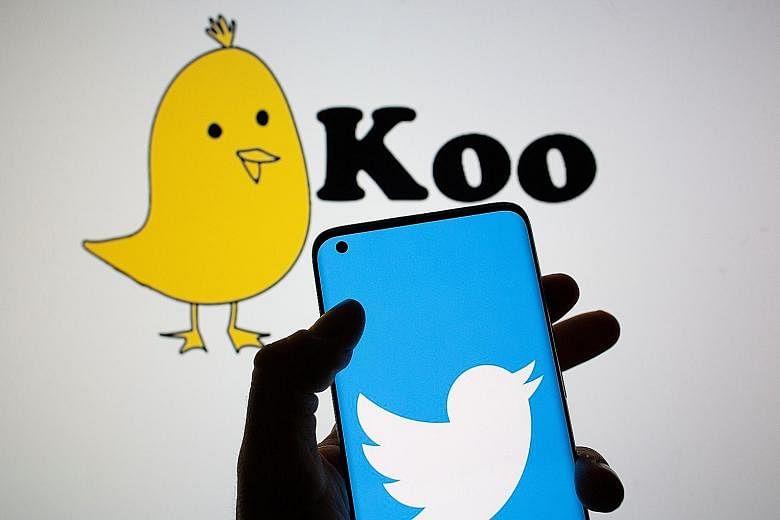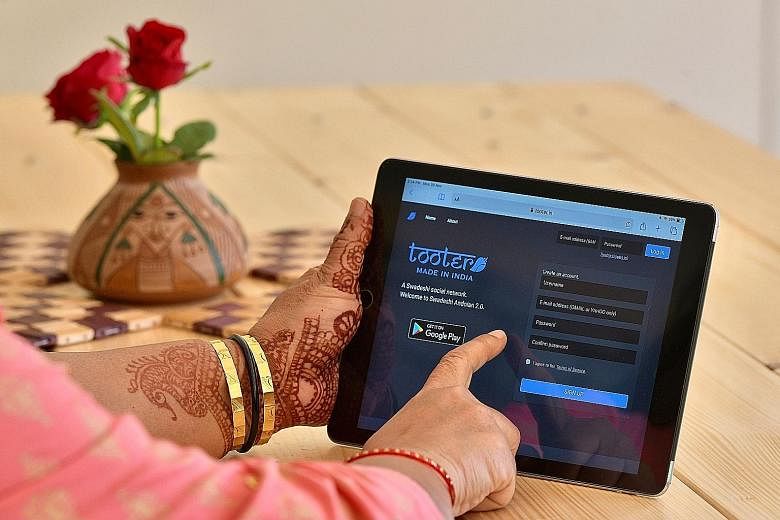When one signs up to Koo, an Indian microblogging platform similar to Twitter, the user is onboarded with a video featuring a woman dressed in a yellow sari to match the app's logo of a chick.
"Hello and welcome to Koo, the place where you get to hear the voices of India," she says, her palms joined together in a namaste.
The firm gained prominence last month during a face-off between the government and Twitter, when ministers and other senior politicians from the Bharatiya Janata Party propped it up as a domestic alternative to the San Francisco-based firm, both in a bid for digital self-reliance as well as an effort to exert greater control on social media.
Twitter found itself in the government's cross hairs last month after it refused to ban certain accounts that the government had flagged, citing freedom of expression.
But as the unexpected tailwind from the fracas ebbs, Koo is now banking on Indian voices - in languages other than English - that it says remain unheard on Twitter, to sustain its growth.
"There are many in the country who are not using Twitter because they have not been given an immersive experience in their languages," Koo co-founder Mayank Bidawatka told The Straits Times.
Illustrating his point with Kannada, which has more than 43.7 million speakers, he said that the number of daily tweets in Kannada is fewer than 1,000.
"The language divide (on Twitter) is massive and this is a problem we want to solve," he said.
India is expected to have 829 million smartphone users by next year, with the majority of them more conversant in their native languages than in English.
Koo hopes to cater to these users by offering its platform in Indian languages and making it easier for them to post content in their native tongues. For instance, it translates content typed in English into five other languages and intends to expand the language choices to more than 25 by the end of this year.
A Bloomberg report last month, quoting data from analytics provider Sensor Tower, said Koo's installs had soared by 901,000 between Feb 6 and Feb 11.
The app, launched in March last year, had amassed 2.6 million installs last year, and now has more than 4.7 million installs.
But even Koo's founders acknowledge that they are not here to replace Twitter, which remains popular with Indians for the global access it provides to news and personalities. Launched in India in 2006, it currently has around 17.5 million users.
"The message from our company has never been 'please leave Twitter and come to Koo'," said Mr Bidawatka.
"We are pitching it instead as a place to connect with Indians deeply in their native languages."
Several Indian ministers opened accounts on Koo in recent weeks, urging their followers to do the same. The government's endorsement, however, has been a double-edged sword.
With sparse representation from voices critical of the government, as well as the opposition, on Koo, there has been speculation in Indian media that the app could end up being India's version of Parler, an American microblogging service popular with conservatives.
Mr Bidawatka, however, said he and co-founder Aprameya Radhakrishna are "apolitical".
"We will welcome everyone irrespective of religion, caste or political affiliation," he added.
How strongly Koo stands up for freedom of expression when faced with a Twitter-like piquant face-off will determine whether it emerges popular with users from across the political spectrum.
Mr Bidawatka said the firm's stand is simple: "We only work within the legal boundaries of the country we operate in."
He added: "We will try to figure out what is best for the country without causing any havoc, as well as how to deal best with the balance of freedom of speech and content moderation."
Koo is currently setting up panels of experts, comprising retired judges and others, to advise on this process.
There are infrastructural and funding challenges too that have to be overcome.
When the government banned TikTok last year, a host of Indian apps pitched themselves as an alternative to the video-sharing platform. While they gained initial traction, as well as funding, the momentum has since slowed for many.
Even Tooter, another domestic avatar of Twitter, has failed to gather momentum after it was launched last year.
"They get some level of buy-in initially, but few talk about or use them later because they can't live up to expectations," said Mr Neil Shah, partner and vice-president at Counterpoint Research.
Koo, he added, will have to market itself really well to get necessary funding and have the proper infrastructure to scale up faster to accommodate new users. "Because if the user experience is not good, no one will stay on the app."
Mr Sanket Upadhyay, an Indian television journalist, told ST that using Koo felt like being in a "bare-bones hatchback" after Twitter's "luxury SUV" experience.
He said: "There's very little in terms of trending topics and the general experience of scrolling up and down is clunky.
"But Koo's user base, even though more right wing and centrist, is less acerbic than Twitter for now," Mr Upadhyay added.
The app faced glitches as it tried to cope with the surge in users last month, which Mr Bidawatka described as "natural" for any firm in a similar spot. "We are stable now and prepared for the worst."


